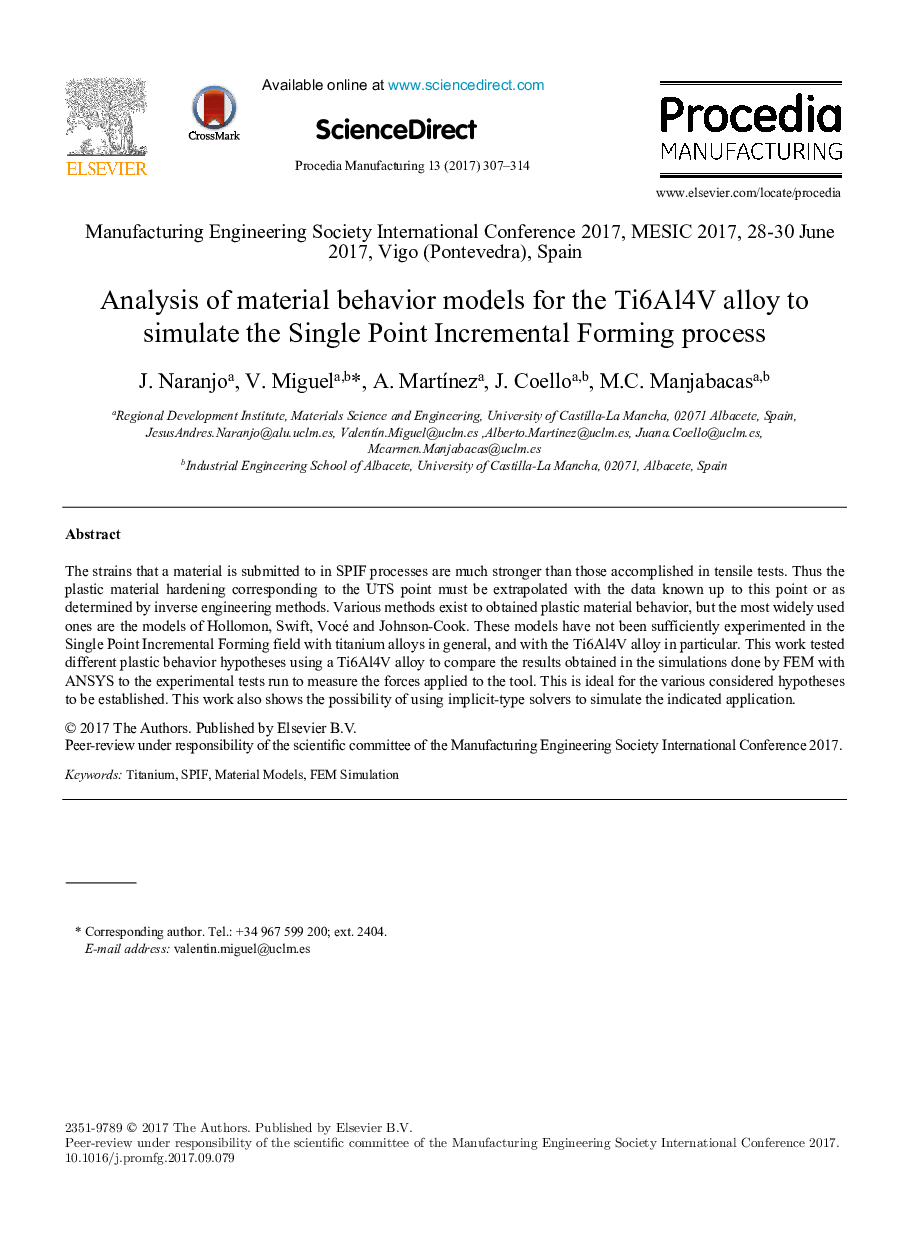| Article ID | Journal | Published Year | Pages | File Type |
|---|---|---|---|---|
| 5128543 | Procedia Manufacturing | 2017 | 8 Pages |
The strains that a material is submitted to in SPIF processes are much stronger than those accomplished in tensile tests. Thus the plastic material hardening corresponding to the UTS point must be extrapolated with the data known up to this point or as determined by inverse engineering methods. Various methods exist to obtained plastic material behavior, but the most widely used ones are the models of Hollomon, Swift, Vocé and Johnson-Cook. These models have not been sufficiently experimented in the Single Point Incremental Forming field with titanium alloys in general, and with the Ti6Al4V alloy in particular. This work tested different plastic behavior hypotheses using a Ti6Al4V alloy to compare the results obtained in the simulations done by FEM with ANSYS to the experimental tests run to measure the forces applied to the tool. This is ideal for the various considered hypotheses to be established. This work also shows the possibility of using implicit-type solvers to simulate the indicated application.
